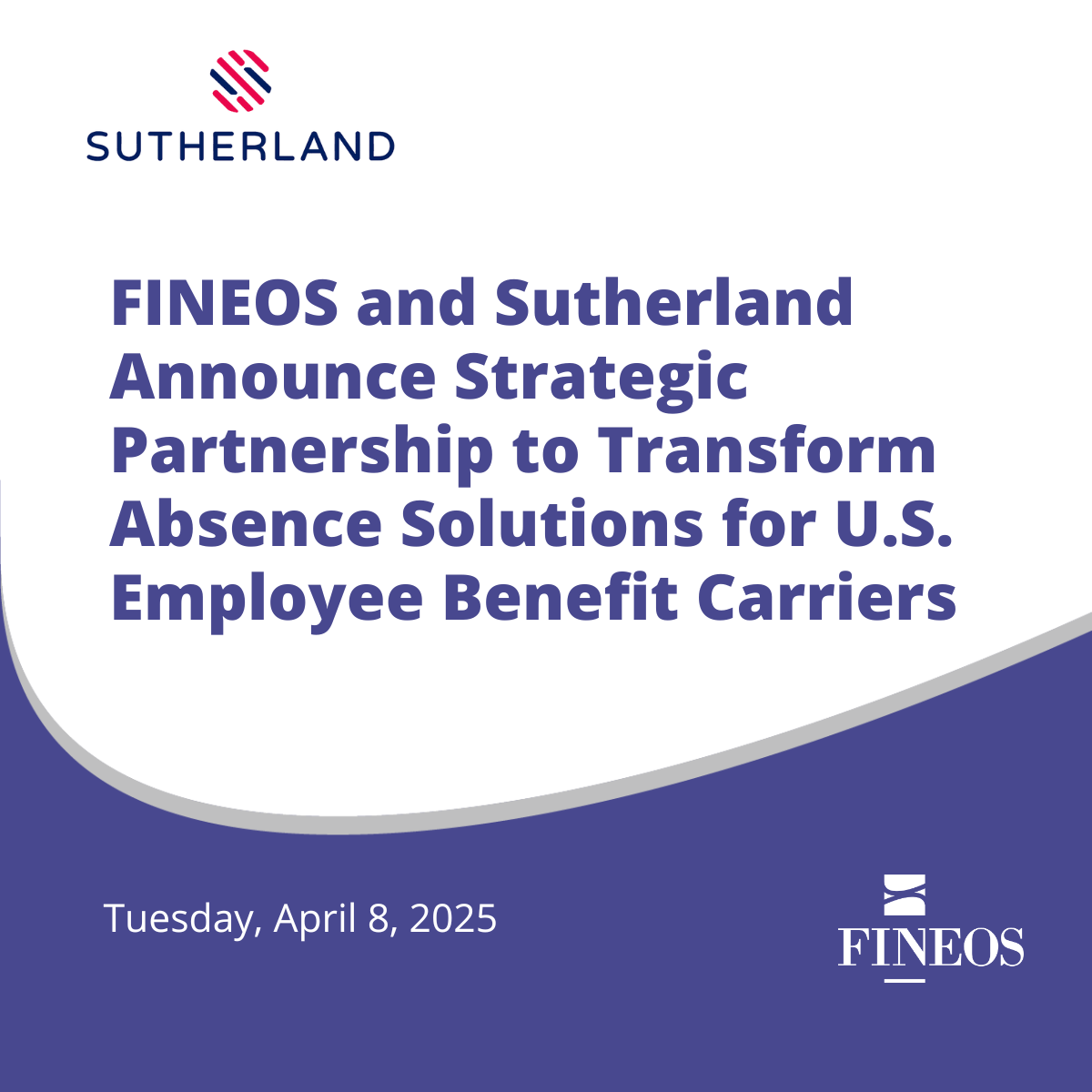Original article appeared in Toolbox HR, January 2022
By: Megan Holstein, SVP Absence and Claims, FINEOS
The COVID-19 pandemic changed the way employees think about compensation and benefits. In this article, Megan Holstein, Esq., SVP Absence and Claims Product, FINEOS, discusses how the pandemic has changed the employee benefits industry and what employers can do to stay competitive.
The COVID-19 pandemic dramatically changed the world of work, including expectations around employee benefits. As a result, the employee benefits industry is experiencing a pivotal moment. Employers and insurance carriers must take steps to transform and stay competitive in this new world of workplace benefits. Let us explore three ways the pandemic changed the employee benefits industry.
1. How We Work: The Benefits of Remote, Hybrid, and Flexible Work Have Become the Norm
The COVID-19 pandemic disrupted global labor markets, including millions furloughed, terminated or retiring early and unexpectedly. Millions of others were forced to work from home and are not returning to a workplace in a pre-pandemic state. A recent study analyzed the potential for remote work over 2,000 tasks and looked at 800 occupations, and found that approximately a quarter of the workforces in advanced economies could work from home between three and five days a week. Additionally, less than one in five executives say they want to return to the office as it was pre-pandemic. Over half of employees prefer to be remote at least three days a week, and over half of executives say that employee productivity has improved. Employees who report higher productivity are more likely to say that their companies have been better at certain activities, like collaborating on projects and serving customers.
Childcare and family care continue to be an issue as fewer employees are currently employed in that sector. Additionally, ongoing quarantines within schools, childcare, and eldercare environments make it difficult for those relying on that family care to return to their workforce with regularity. Thus, by offering remote, hybrid, and flexible work options, employers are likely to attract and retain talent and provide ways to keep employees productive as they face challenges in their personal lives.
To support this shift, employers must offer not only video conferencing tools such as Zoom, Google Meet, or Microsoft Teams but also a full digital workspace suite and cloud storage. A hybrid workspace requires that employees access documents and software remotely and in the office. The big-name players have tools, such as Microsoft Office 365 or Google Workspace, but many smaller solutions also exist. Finally, company communications must be available on a robust intranet and no longer posted on break room walls and TV monitors throughout the physical workspace.
2. Focus on Financial Ability To Take Time Off of Work
Workers’ expectations of employment benefits are changing, and they are looking for employers to rectify what one author has deemed “…a childcare shortage, a paid sick leave shortage, and a healthcare shortage.” During 2020, employees were either forced off work due to shutdowns or needed time off due to illness or family members’ illness or quarantines. Workers remain fearful of using their time off for fear of termination or inability to pay bills, hence the reason we have such a patchwork of federal, local, and state leave laws. People cannot afford to lose their job if they take time off and workers have not saved in the event of an unplanned absence like we’ve experienced with the pandemic.
Employers quickly learned that paid leave is essential during critical life events, and financial security creates peace of mind at work. Employers have increased offerings around income protection like short-term disability and paid leave. Unique paid leave benefits are also sprouting up, including emergency savings accounts or loan options beyond the traditional 401K loan to help employees who have a financial burden surrounding taking necessary time off. Additionally, the government paid leave programs are passing at an increased rate —Connecticut Paid Family and Medical leave program kicks off in 2022, Colorado’s and Oregon’s programs are next, and New Hampshire just passed their unique paid leave law.
Employers should check with their benefits vendor and legal counsel to determine what products and information they provide. Insurance carriers increasingly offer benefit administration tools to assist with online benefits enrollment and leave administration website portals. Such digital solutions such as Benefitfocus and Jellyvision assist employees in easily reviewing benefits that address their needs. They can also determine entitlements for needed time off. Insurance carriers like Unum offer LeaveLogic to plan leaves and their insurance portal to file the actual leave of absence. Law firms such as Jackson Lewis offer workthruIT, a regulatory compliance solution to track federal and state workplace rules.
3. Tailored Benefits To Fit Today’s Workforce
Companies have innovated to move quickly to shift benefits and the delivery of such benefits to tailor more toward the changing needs of today’s workforce. Employers are recognizing holidays like Juneteenth as paid company holidays and introducing new company “perks” such as mental health days. Employees have seen the art of the possible and expect more from their employers when it comes to workplace benefits.
As more people become vaccinated and stores and businesses open up, employers are scrambling to hire and retain employees and fight burnout — the risk of depression among employees is 71% higher than before COVID-19 — using tailored benefits as a tool. Rather than a one-size-fits-all benefits package, employers are transitioning to a personalized benefit offering where employees can choose from a menu such as skills assessment, training, tuition assistance, fertility benefits, and virtual mental health management.
How To Remain Competitive
As the employee benefits market undergoes this transformation, insurance carriers and employers can and must have a business pivoting plan to consider what the next generation of benefits will entail and what resources are needed for support.
1. Acknowledge: There is likely no new normal or any normal, and constant change is here for the foreseeable future. Those who arm themselves with tools and partners that provide benefit usage data and trends, compliance updates, and innovative, flexible offerings will fare better.
2. Assess: Designate a person or group to assess the benefit possibilities from things like paid leave, mental health services, and pet insurance. Survey employees and the local market to understand needs and trends. Assess technology to deliver the benefits. Solutions may include productivity indicators for remote and hybrid work, leave of absence portal or software, and benefit enrollment education tools.
3. Analyze: Have employee benefit usage data at your fingertips. This information can help inform potential policy and program changes. Not all benefit changes have to be major. Consider swapping that margarita machine for a program supporting floating holidays or negative PTO balances. It is also important to analyze the why behind offering certain employee benefits. For example, what does the organization get out of offering the benefits and do they align with the organization’s mission and values? Finally, such analysis will assist in planning and budgeting for new and changing benefits and resources. HRIS and HCM systems, as well as most insurance carriers, provide data analytic insight around employer policies, benefit usage, and leave of absence trends.
In summary, the pandemic reformed the workplace in more ways than one. As the demand for talent and reducing burnout remains a challenge, employers and insurance carriers must continually evaluate benefit offerings, trends, and tools to evolve and thrive to not only stay competitive and productive but also attract and retain top talent.


